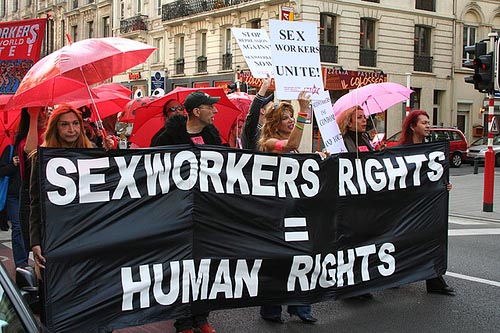Client demand for unprotected sex is contributing to the HIV epidemic among female sex workers, according to Canadian research published in the online edition of the Journal of Acquired Immune Deficiency Syndromes. Investigators in Vancouver found that approximately three-quarters of sex workers were offered more money by clients for sex without a condom and that 19% accepted this money. Transgender women were more likely to accept extra money for unsafe sex, as were women who experienced client violence and users of methamphetamine.
“Our study confirms the high demand by clients for unprotected sex among SWs [sex workers] in an urban Canadian setting,” write the authors. “These findings are consistent with other studies, which have suggested that clients looking for unprotected sex may seek out SWs who are particularly vulnerable to coercion.”
The investigators were concerned that within the context of commercial sex work, the responsibility to initiate condom use is usually placed with the sex worker. However, a growing body of research has shown that poverty, unstable housing, violence and policing policies have a significant impact on the ability of sex workers to use condoms. Clients of sex workers may also have an important role in determining the use of condoms.
To see if this is the case, the investigators designed a cross-sectional study involving 490 female sex workers. Recruitment to the study took place between February 2010 and October 2011. Participants were offered comprehensive HIV and STI testing and counselling and completed questionnaires. These included sections relating to their social and economic background, sex working patterns, experience of violence and use of recreational drugs. They were also asked if in the previous six months, a client had offered them extra money for sex without a condom, and if they had accepted this money and had unprotected sex with the client. The investigators conducted a series of analyses to see if there were any factors associated with being offered or accepting extra money for sex without a condom.
The women had a median age of 35 years and the median age at first sex work was 20 years. A quarter identified as belonging to a sexual minority (e.g. lesbian, transgender). Overall, 54% reported soliciting for clients independently (e.g. through online advertising), 26% in indoor sex environments (e.g. brothels, massage parlours) and 71% in outdoor environments (e.g. streets). The investigators comment that this shows “the substantial overlap in terms of sex work solicitation environments”. There was an 11% HIV prevalence and 10% of women had a sexually transmitted infection (STI).
A total of 356 women (73%) reported being offered more money by clients for sex without a condom; 75 of these women reported accepting this money and agreeing to unprotected sex.
Factors associated with being offered more money for sex without a condom included use of ‘speedballs’ (AOR = 6.93; 95% CI, 1.60-29.94); a higher number of weekly clients (AOR = 1.03; 95% CI, 1.01-1.06, a 3% increase in odds for each extra client); difficulty accessing condoms (AOR = 2.72; 95% CI, 1.09-6.77); and having clients who visited other sex workers (AOR = 1.83; 95% CI, 1.19-2.84).
Accepting money for unsafe sex was associated with belong to a sexual minority (AOR = 2.72; 95% CI, 1.35-5.46); experience of client violence (AOR = 2.18; 95% CI, 1.10-4.34); and use of methamphetamine (AOR = 2.95; 95% CI, 1.27-6.87).
Older women were significantly less likely to report accepting more money for unprotected sex (AOR = 0.96%; 95% CI, 0.93-1.00, a 4% decrease in odds for each year). “Older women with longer duration in sex work may be more experienced in negotiations with clients and more comfortable refusing demands for higher fees,” write the authors.
Women who worked indoors (as opposed to outdoors) were also significantly less likely to accept a larger fee in return for unsafe sex (AOR = 0.15; 95% CI, 0.04-0.54). The authors suggest this is because “women who work in indoor settings can have more control over negotiations with clients regarding sexual transactions and can charge increased fees, potentially reducing the need to agree to clients’ demands for unsafe sex.”
The authors conclude their study “provides strong evidence of the importance of acknowledging the role of clients in the spread of HIV/STIs”. They call for a review of “policies relating to the criminalization and regulation” of sex work.
Source






